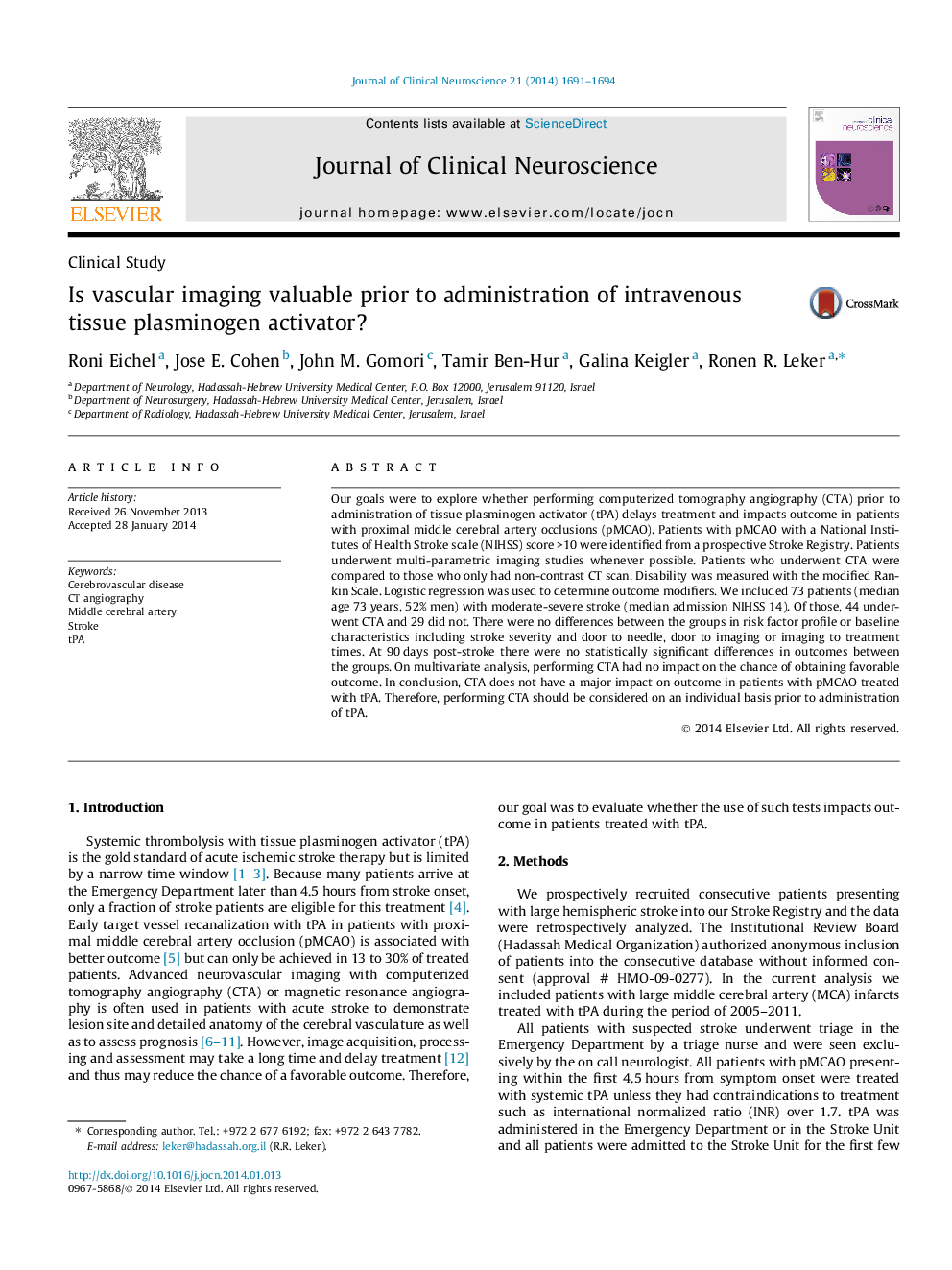| Article ID | Journal | Published Year | Pages | File Type |
|---|---|---|---|---|
| 3059332 | Journal of Clinical Neuroscience | 2014 | 4 Pages |
Our goals were to explore whether performing computerized tomography angiography (CTA) prior to administration of tissue plasminogen activator (tPA) delays treatment and impacts outcome in patients with proximal middle cerebral artery occlusions (pMCAO). Patients with pMCAO with a National Institutes of Health Stroke scale (NIHSS) score >10 were identified from a prospective Stroke Registry. Patients underwent multi-parametric imaging studies whenever possible. Patients who underwent CTA were compared to those who only had non-contrast CT scan. Disability was measured with the modified Rankin Scale. Logistic regression was used to determine outcome modifiers. We included 73 patients (median age 73 years, 52% men) with moderate-severe stroke (median admission NIHSS 14). Of those, 44 underwent CTA and 29 did not. There were no differences between the groups in risk factor profile or baseline characteristics including stroke severity and door to needle, door to imaging or imaging to treatment times. At 90 days post-stroke there were no statistically significant differences in outcomes between the groups. On multivariate analysis, performing CTA had no impact on the chance of obtaining favorable outcome. In conclusion, CTA does not have a major impact on outcome in patients with pMCAO treated with tPA. Therefore, performing CTA should be considered on an individual basis prior to administration of tPA.
